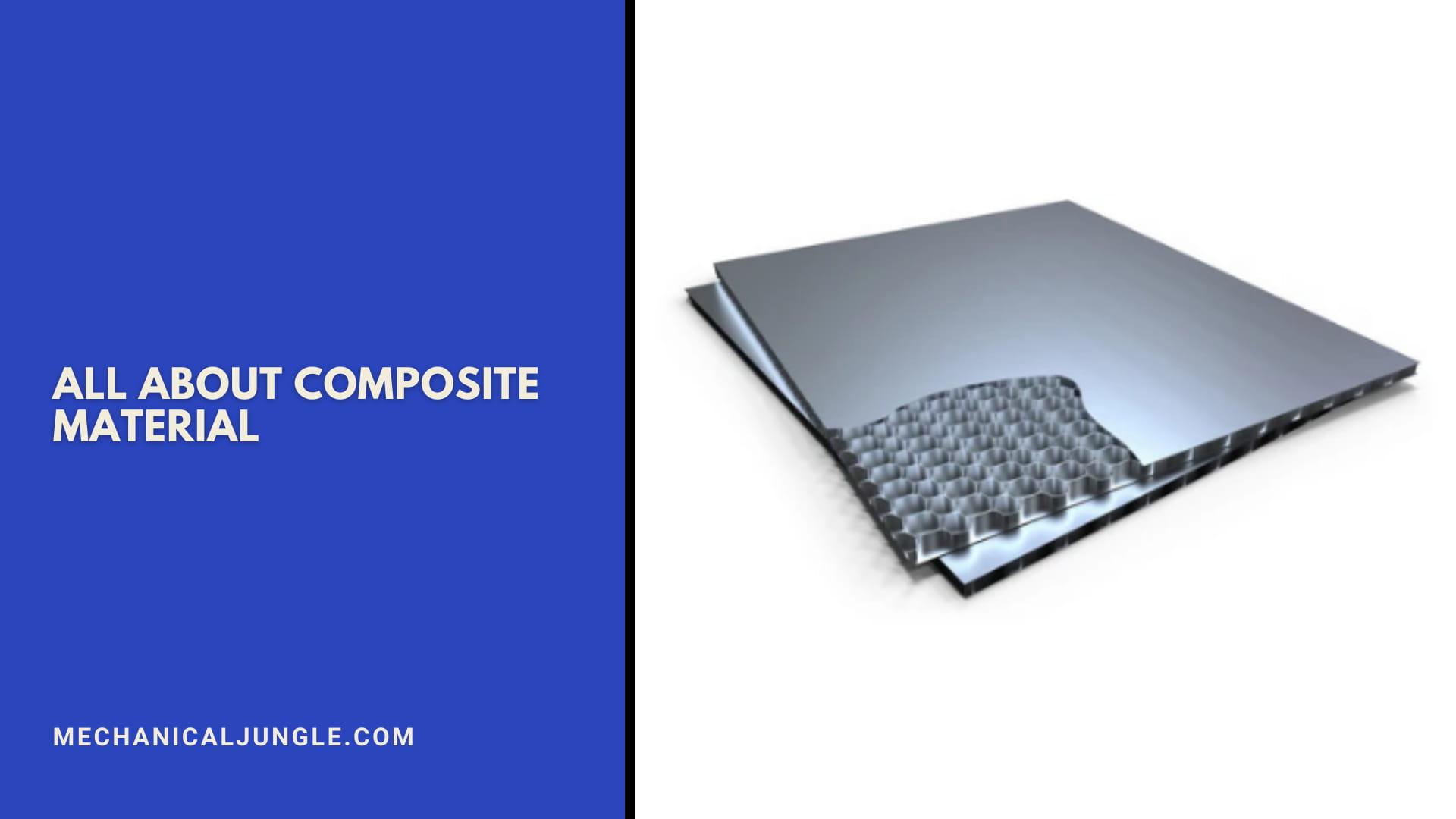
What Is Composite Material?
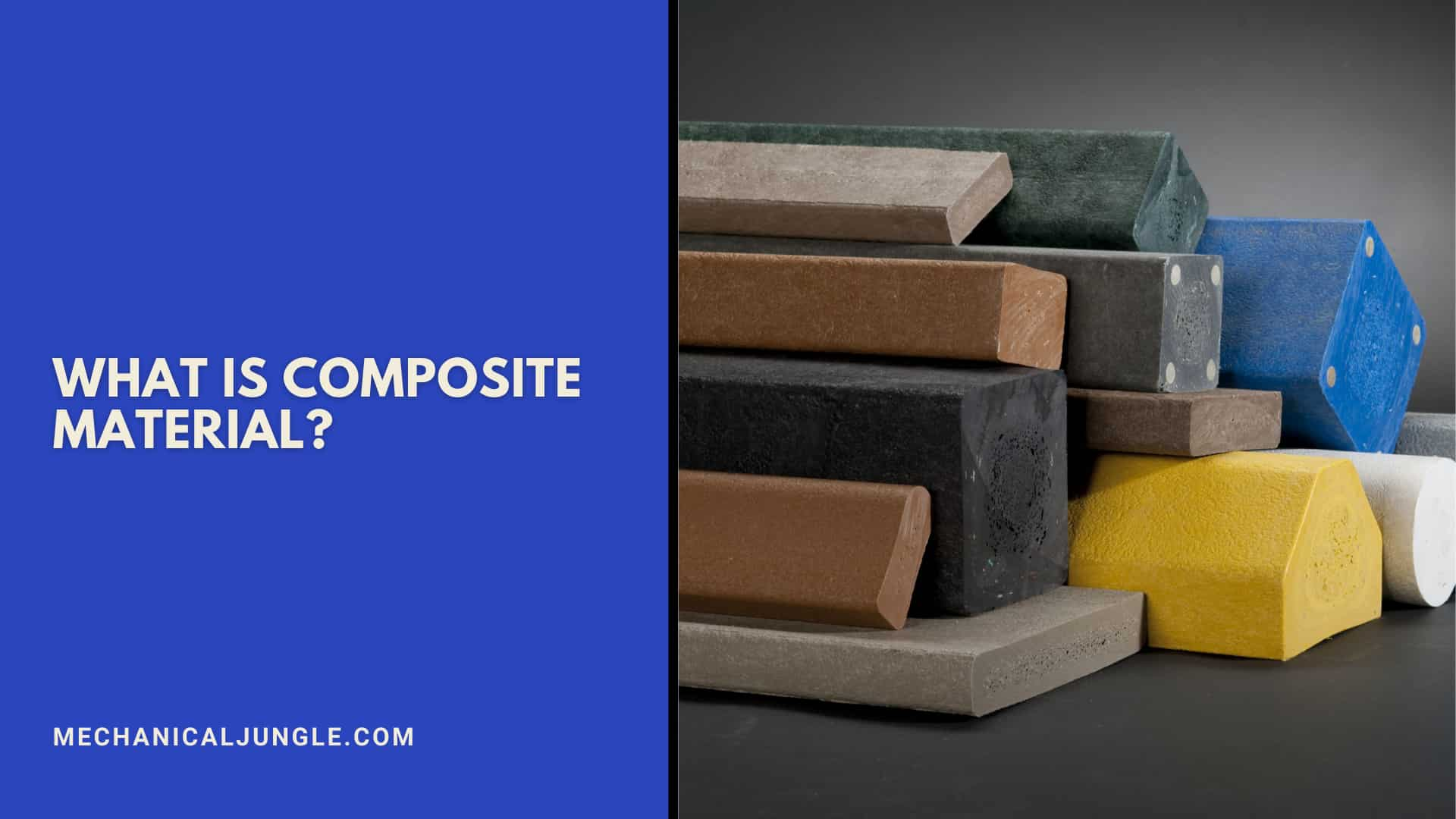
Composite materials are a combination of two materials with different physical and chemical properties. When they are combined, they form a material that is specialized to perform a certain function, for example, to become stronger, lighter, or resistant to lightning.
They can also improve strength and stiffness. The reason for their use over conventional materials is that they improve the properties of their base material and are applicable in many situations.
There can be many reasons for preferring new content. A typical example is materials that are less expensive, lighter, or stronger when related to common materials.
Recently, researchers have begun to actively incorporate sensing, action, computing, and communication into composite materials known as robotic materials.
For our website, we refer to fiber-reinforced polymer (FRP) composites, typically with natural fibers embedded in a carbon, glass, aramid, polymer, or polymer matrix.
Other matrix materials may be used, and composites may also contain fillers or nano-materials such as graphene.
Many component materials and various processes can be used, which make composites extremely versatile and efficient. They generally yield a lighter, stronger, more durable solution than traditional materials.
Why Use Composites?
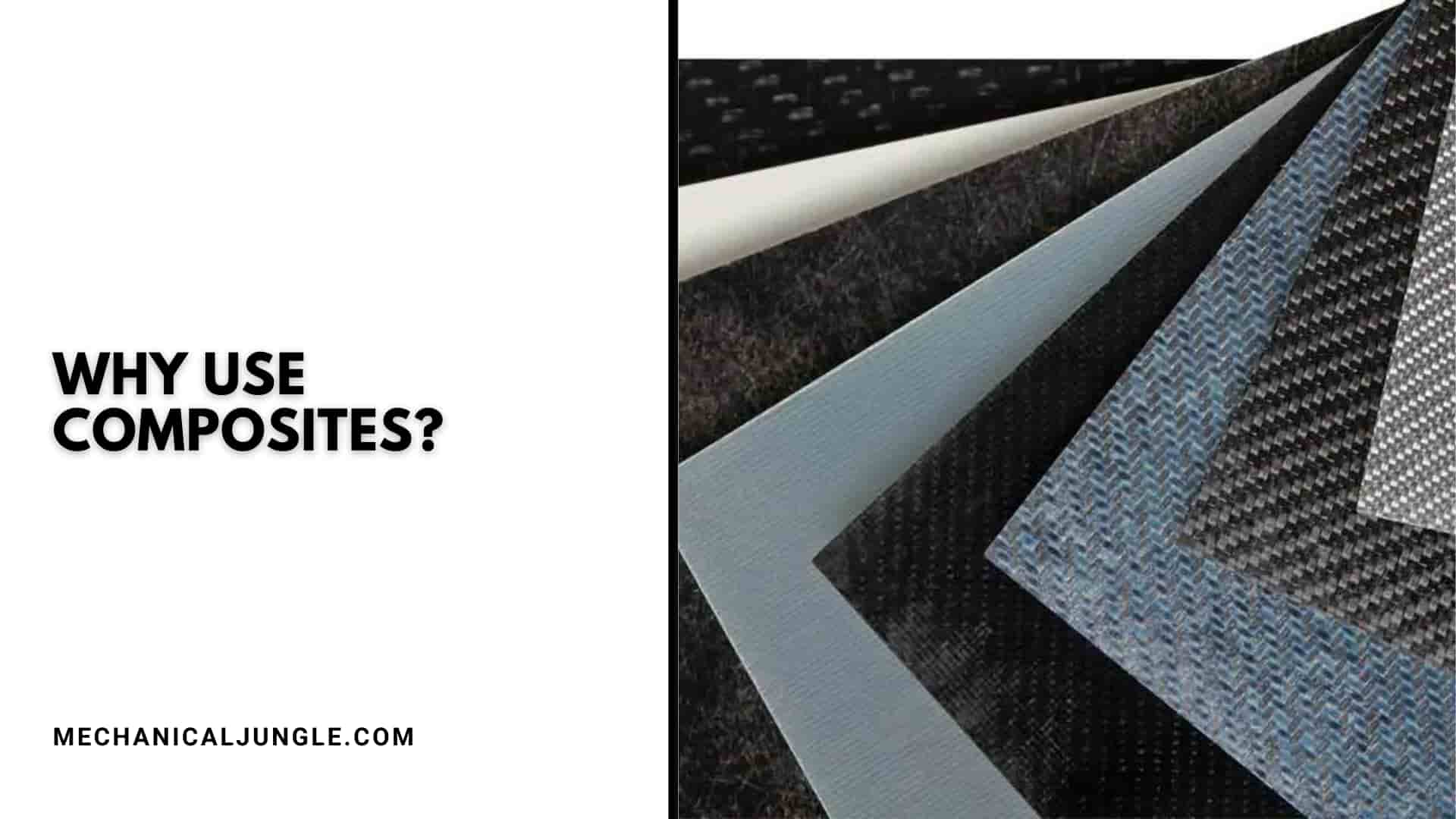
One of the main reasons for using composites materials, or about composite materials, instead of traditional materials for components is weight savings.
While composites are lightweight, they can also be stronger than other materials; for example, reinforced carbon fiber can be up to five times stronger than 1020 grade steel and hold only one-fifth of the weight, which makes it stronger for structural purposes.
Another advantage of using composites over conventional types of material is its thermal and chemical resistance as well as electrical insulation properties. Unlike traditional materials, composites can have many properties that are not often found in a single material.
Fiber-reinforced composites, such as fiber-reinforced plastics (FRP composites), are finding increasing use in the design and manufacturing of final products for commercialization.
The primary reason for choosing composite materials for components is the weight savings for their relative rigidity and strength. For example, carbon-fiber-reinforced composites can be up to five times stronger than 1020 grade steel while weighing only one-fifth of the weight.
Aluminum (grade 6061) is close in weight to carbon-fiber composites, and although still somewhat heavier, composites can have up to twice the modulus and up to seven times the strength.
When Should You Use Composites?

As With all engineering materials, composite have particular strengths & weaknesses, which must be considered in the specified step. Composites are by no means the right materials for every job.
However, a major driving force behind the development of composites has been that the combination of reinforcement and matrix can be changed to meets the required final properties of a component.
For example, if the finals component needs to be fire-resistant, a fire retardant matrix may be used at the development stage so that it has this property.
Weight reduction:- The primary reason for choosing composites is to improve the specific strength/hardness (strength/hardness specific per unit weight). It helps to reduce fuel usage or increase acceleration or range in transport.
This allows for easier, faster installation or faster movement of robotic arms and lowers to supporting structures or foundations. It improves upward stability in ships and offshore structures and buoyancy for deep-sea applications.
Durability and Maintenance:- Composites do not do rust, which is especially important in marine & chemical environments. The need for Maintenance & painting is reduced or eliminated. Compound bearings for marine engines and bridges do not require lubrication or wear.
Combine excellent fatigue resistance and composites can increase product lifetime by manifold in many applications.
Additional Functionality:- Composites are thermal insulators that are good for fire and explosion protection or cryogenic applications. Electrical insulation is useful for lineside railway structures and radar transparency.
If necessary, a conductive mesh or coating can be integrated, e.g., To reflect radar or divert power. Sensors, electronics, and cabling can be embedded.
Design Freedom:- The overall design allows freedom of architectural form. Multiple parts can be consolidated into one, and stiffeners, inserts, etc., can be integrated into the mold. Composites can be tailored to the application by selecting component materials and embedding additional Functionality.
What Are Composites Made Of?
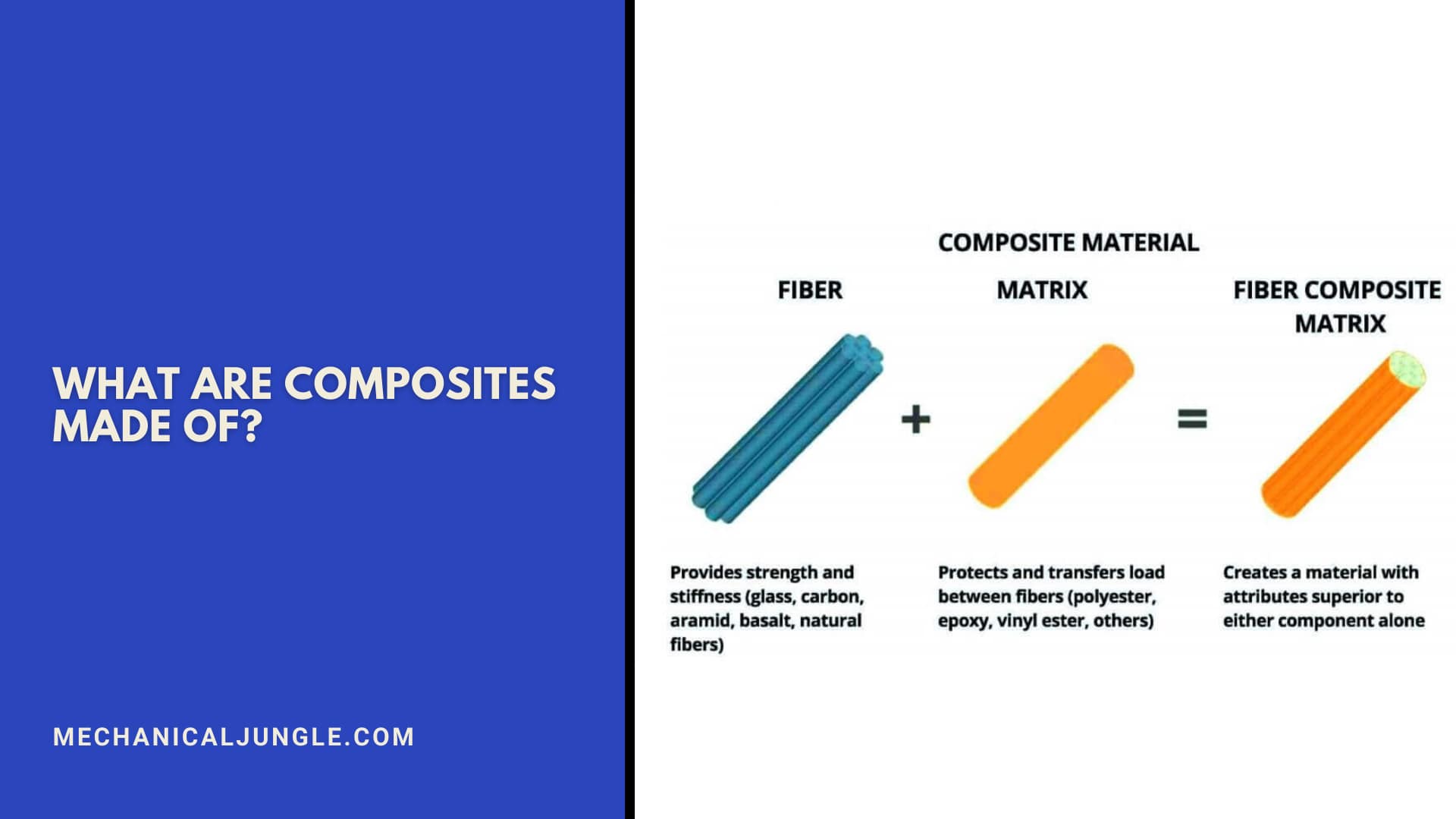
The Composite, also known as fiber-reinforced polymer (FRP) composites or composite materials examples, are composed of a polymer matrix that is an engineered, man-made, or natural fiber (such as glass, carbon, or aramid) or other reinforced material. – Combined with reinforced.
Together. The matrix protects the fiber from environmental & external damage & transfers the loads between the fibers.
The fibers, in turn, provide strength & stiffness to the matrix – and help it resist cracks and fractures. In many of our industrial products, polyester is the resin matrix, and glass fiber is the reinforcements.
But many combinations of resins & reinforcements are used in composites—and each material contributes to the finished product’s unique properties:
The fiber, powerful but brittle, provides strength and stiffness, while the more flexible resin provides shape and fiber.
FRP composites may also include fillers, additives, core materials, or surface finishes designed to improve the manufacturing process, appearance, & performance of the final products.
Natural and Synthetic Composites:
Composites can be naturals or synthetic composites examples. Wood, a naturals composites, is a combination of cellulose or wood fibers and a substance called lignins.
Fibers give Wood its strengths; Lignin is the matrix or natural glue that binds & stabilizes them. Other composites are synthetic man-made.
Plywood is a man-made composite that combines natural & synthetic materials. Thin layers of wood veneers are bonded together to form flat sheets of adhesive Wood that are stronger than natural Wood.
Are Plastics Composites?
Not all plastics are composites, or is composite plastic. In fact, most plastics—which are used in toys, water bottles, and other familiar objects—are not composites. They are pure plastic. But many types of plastics can be strengthened to make them stronger.
This combination of plastic and reinforcement can produce some of the strongest, most versatile materials for their weight ever developed by technology.
What Are Different Types?
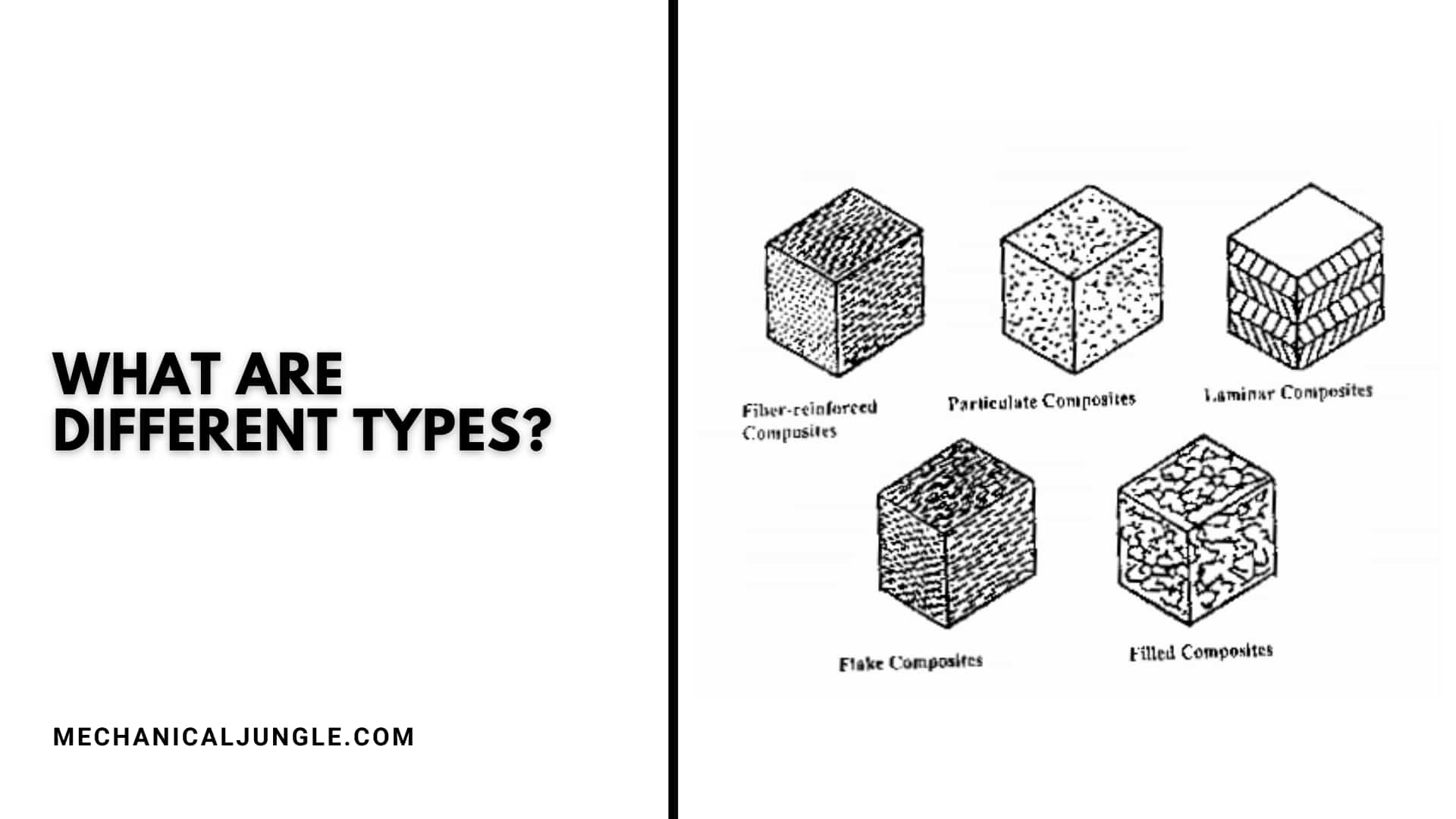
Some common composite ingredients include:
#1. Ceramic Matrix Composites
Ceramics dispersed in a ceramic matrix. These are betters than normals ceramics as they are thermal shock & fracture resistant.
#2. Metal matrix composite
A metal is spread throughout the matrix.
#3. Reinforced Concrete
Concrete reinforced with a high tensile material such as a steel reinforcing bar.
#4. Plywood
Engineered Wood made by gluing several thin layers of Wood together at different angles.
#5. Engineered Bamboo
Strips of bamboo fibers are glued together to form aboard. It is a useful composite because it has greater compressive, tensile and ductile strength than Wood.
#6. Parquet
A section of several pieces of Wood often held together by hardwood. It is sold as a decorative piece.
#7. Wood-plastic Composite
Dough molded into either wood fiber or plastic
#8. Glass Fiber Reinforced Concrete
Concrete that is poured into a glass fiber structure with high zirconia content.
#9. Cement-Bonded Wood Fiber
Pieces of the mineralized wood cast in cement. This Composite has insulating and acoustic properties.
#10. Fiberglass
Glass fiber combined with a plastic that is relatively cheap and flexible.
#11. Carbon Fiber Reinforced Polymer
Set in carbon fiber plastic that has a high strength-to-weight ratio.
#12. Sandwich Panels
Different types of composites are layered on top of each other.
#13. Mixed Honeycomb
A selection of composite materials in several hexagons to create the shape of the honeycomb.
#14. Papier-Mache
Paperbound with an adhesive. These are found in the craft.
#15. Plastic Coated Paper
Paper coated with plastic to improve durability. An example of where it is used is in playing cards.
#16. Synthetic Foam
A lightweight material made by filling metal, ceramic, or plastic with micro-balloons. These balloons are made using either glass, carbon, or plastic.
#17. Engineered Wood
Manufactured Wood combined with other inexpensive materials. An example would be particleboard. Special materials such as veneers can also be found in this Composite.
Structural Composite Materials:

Composite material working systems or structural composites materials can be classified as follows:
#1. Sandwich Structures
They are composed of a core and layers. They allow to improve mechanical properties but without excessive increase in weight. They also improve thermal and acoustic insulation.
#2. Monolithic Structures
Parts with a complex geometry, created by overlapping fabrics with special orientations that allow specific characteristics to be obtained. Such a part is intended to withstand the heaviest structural loads.
Brief History:
The history of composite materials shows that humans have used composites for thousands of years. The first man-made composites were made in Iraq by the Mesopotamians in 3400 BC. Ancient societies glued wooden strips on top of each other at different angles to make plywood.
Thereafter, around 2181 BC. The Egyptians began to make death masks from papyrus soaked in linen or plaster.
Later, both of these societies began to fortify their material with straw to strengthen clay bricks, pottery, and boats. In 1200 AD, the Mongols began making compound bows that were incredibly effective at the time.
These were made of woods, bamboos, bone, cattle tendon, horn, and silk bound with pine resin. After the Industrial Revolution, synthetic resins began to take a solid form using polymerization.
In the 1900s, this new knowledge about chemicals led to the creation of various plastics such as polyester, phenolic, and vinyl. The development of synthetics then began; Bakelite was created by the chemist Leo Baekeland.
The fact that it did not conduct electricity and was heat resistant meant that it could be widely used in many industries. The 1930s were an incredibly important time for the advancement of composites.
Glass fiber was introduced by Owens Corning, who also started the first fiber-reinforced polymer (FRP) industry. Engineered resins during this era are still used today, and in 1936, unsaturated polyester resins were patented. Two years later, high-performance resin systems became accessible.
The first carbon fiber was patented in 1961 and then became commercially available. Then, in the mid-1990s, composites began to become increasingly common in manufacturing processes and for manufacturing because of their relatively inexpensive cost compared to previously used materials.
FAQ: Composite Materials
What Is a Composite Material?
Composite materials are made by combining two or more distinct materials with different physical and chemical properties. This combination results in a material with enhanced properties, such as increased strength, reduced weight, or improved durability.
What Are the Main Components of Composite Materials?
Composite materials typically consist of a matrix and reinforcement. The matrix is usually a polymer or resin that binds the fibers together and protects them from environmental damage. The reinforcement is often fibers such as glass, carbon, or aramid, which provide strength and stiffness.
What Are Some Common Types of Composite Materials?
Common types include:
- Fiber-Reinforced Polymers (FRP): Includes carbon fiber, glass fiber, and aramid fiber composites.
- Ceramic Matrix Composites: Combine ceramics with a ceramic matrix.
- Metal Matrix Composites: Incorporate metals into a matrix.
- Reinforced Concrete: Concrete reinforced with steel bars.
- Plywood: Made from thin layers of wood glued together.
- Wood-Plastic Composites: Combine wood fibers with plastic.
What Are the Advantages of Using Composite Materials?
Composite materials offer several benefits, including:
- Weight Savings: Composites are often lighter than traditional materials.
- Strength and Stiffness: They can be stronger and stiffer than metals.
- Thermal and Chemical Resistance: They can withstand extreme temperatures and resist chemicals.
- Durability: Composites are less prone to rust and corrosion.
- Design Flexibility: They allow for complex shapes and integrated functionalities.
When Should I Use Composite Materials?
Composites are ideal for applications where weight reduction, increased strength, or specific properties such as thermal or chemical resistance are required. They are often used in aerospace, automotive, marine, and construction industries.
What Are Some Examples of Natural and Synthetic Composites?
- Natural Composites: Wood (cellulose fibers and lignin), bamboo (bamboo fibers and resin).
- Synthetic Composites: Plywood, fiberglass (glass fibers and plastic), carbon fiber composites.
Are All Plastics Considered Composites?
No, not all plastics are composites. Most plastics used in everyday items are pure plastics. However, when plastics are combined with reinforcements like fibers, they become composite materials.
What Are Sandwich Structures in Composites?
Sandwich structures consist of a core material sandwiched between two outer layers. This design improves mechanical properties like strength and insulation without significantly increasing weight.
How Has the History of Composite Materials Evolved?
The use of composites dates back to ancient civilizations, such as the Mesopotamians and Egyptians. Modern composites have evolved significantly since the Industrial Revolution, with advancements in synthetic resins and fiber-reinforced polymers in the 20th century.
What Are Some Emerging Trends in Composite Materials?
Recent trends include the integration of sensors and electronics into composites to create “robotic materials,” advancements in nano-materials like graphene, and ongoing research to improve the sustainability and cost-effectiveness of composite materials.

